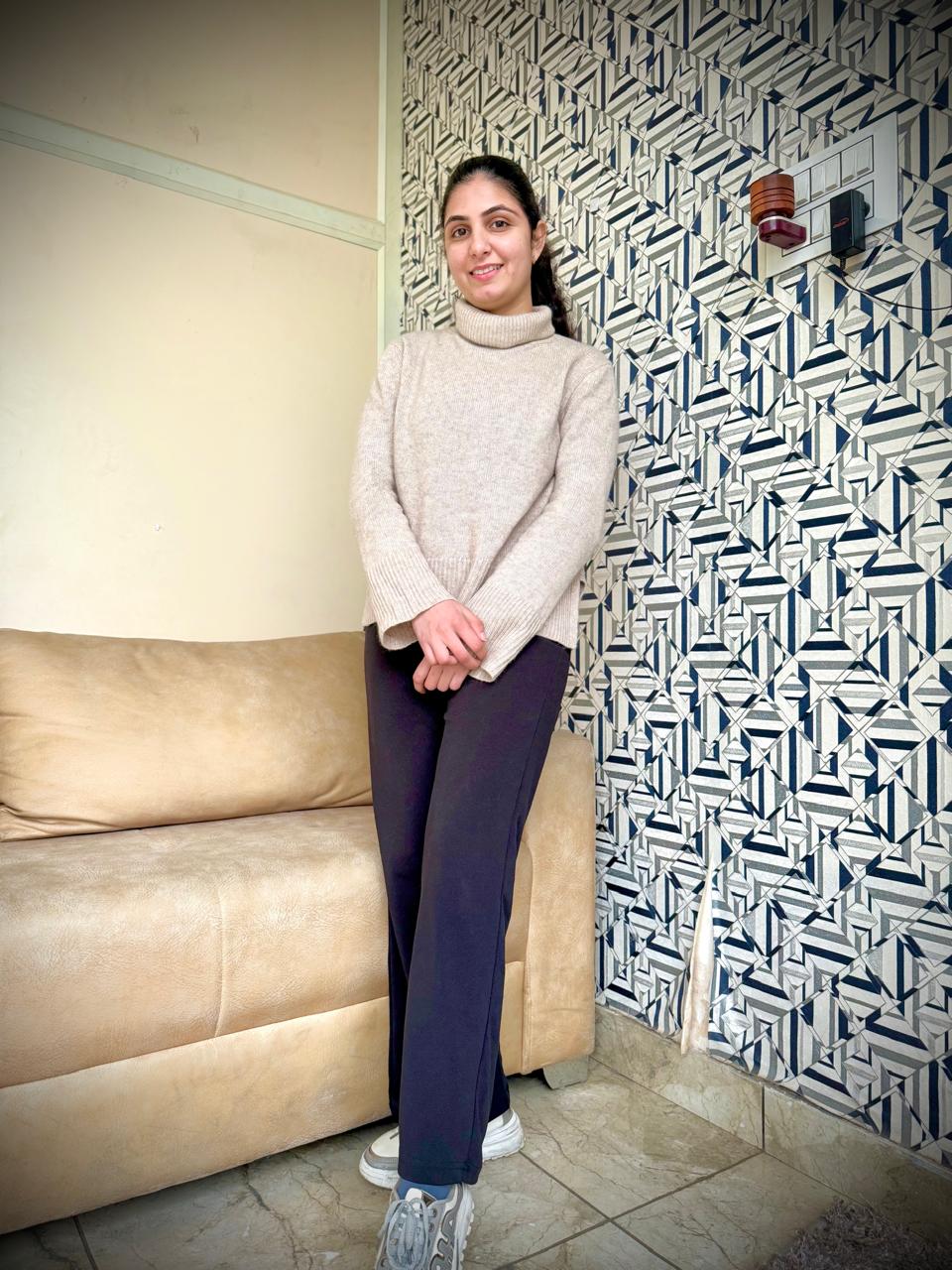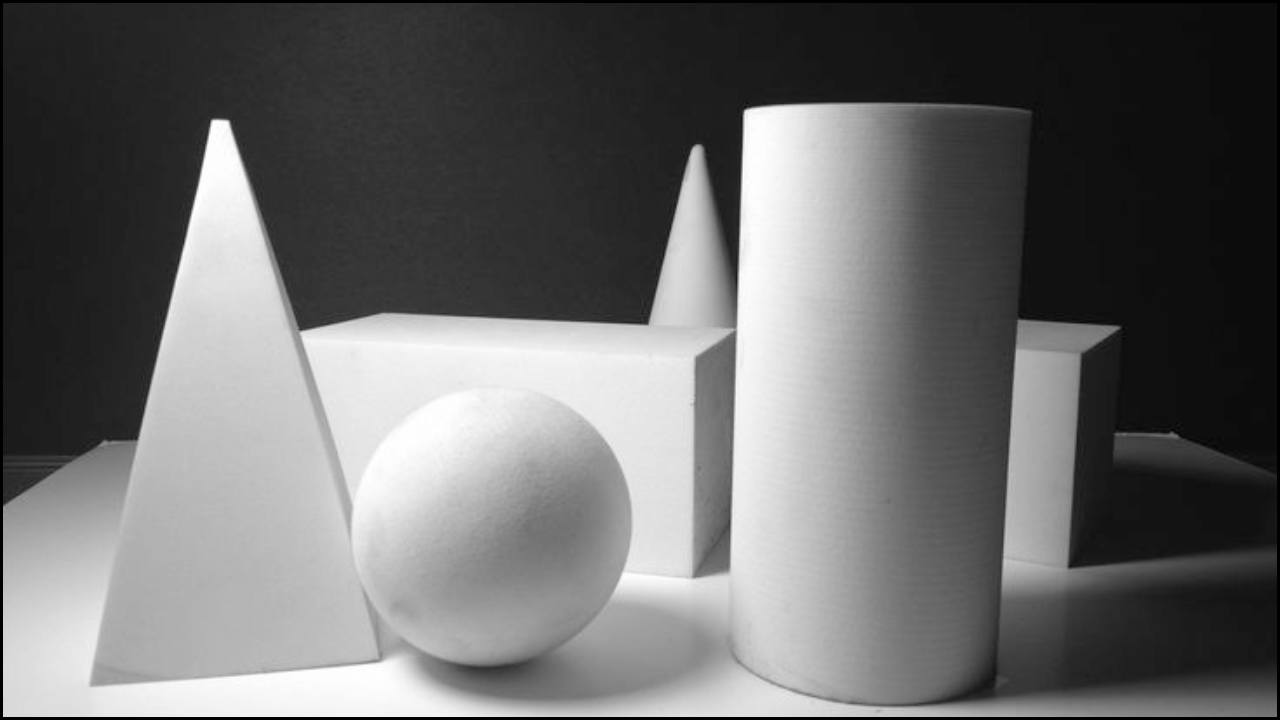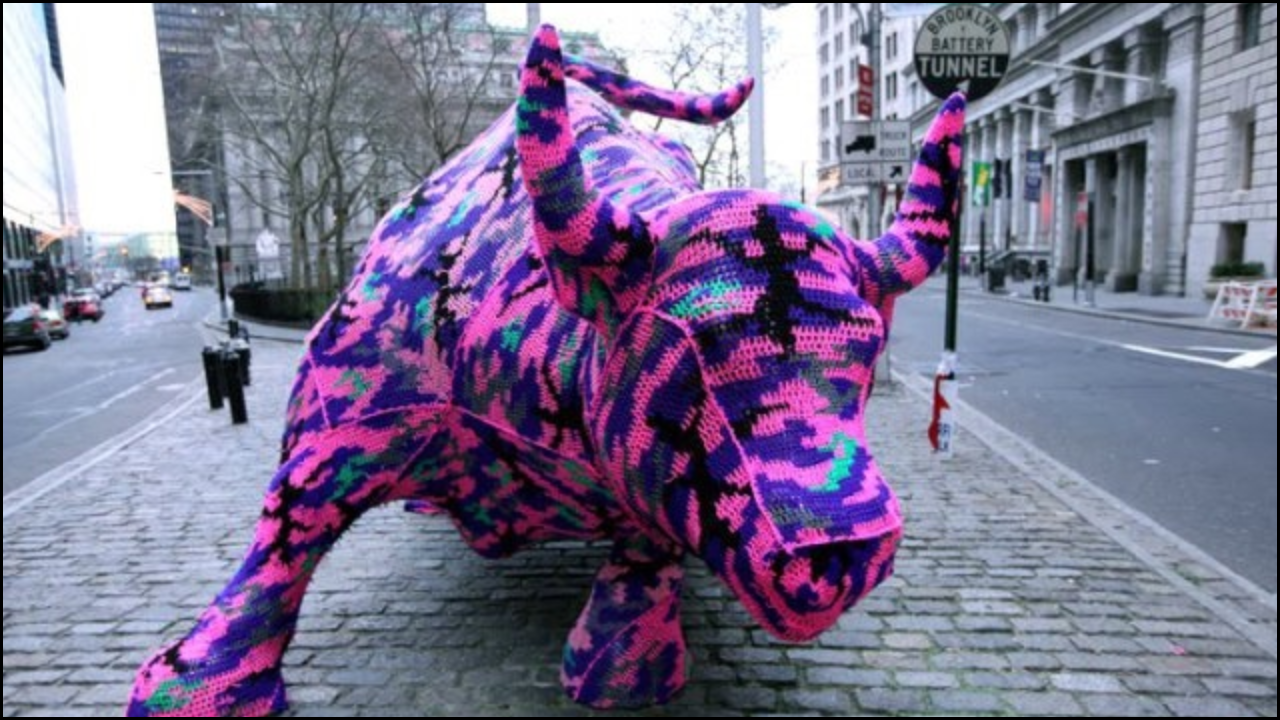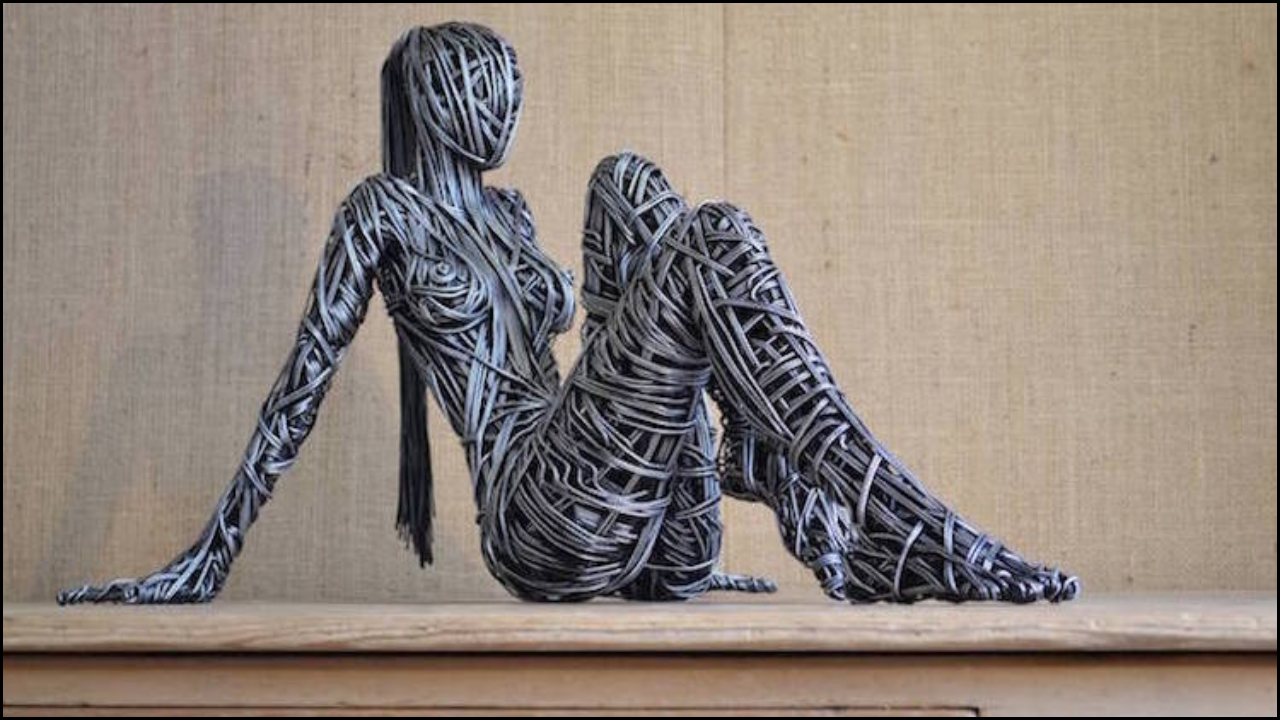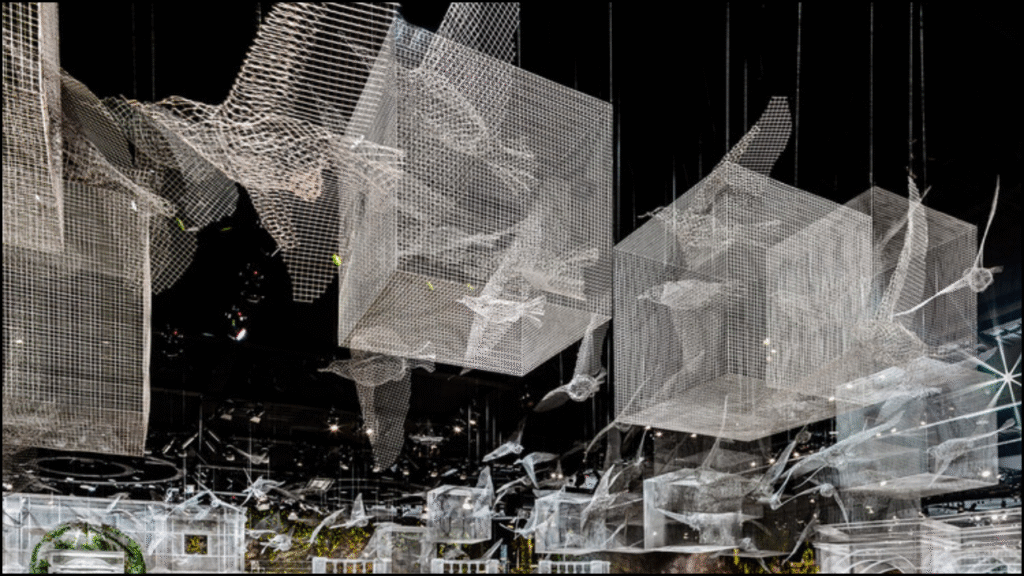
Contemporary art installations have evolved to embrace materials that challenge traditional boundaries. Wire has emerged as a prominent medium, blending structural precision with organic fluidity. Its versatility allows artists to create works that are simultaneously architectural and expressive. Wire transforms space, guiding viewers through three-dimensional forms while conveying motion, lightness, and tension. Its application ranges from intimate, small-scale pieces to monumental installations that dominate gallery spaces.
Table of Contents
Material Properties of Wire
- Flexibility: Wire can bend, twist, and curve, enabling artists to shape it into intricate patterns or sweeping forms.
- Strength: High-tensile wires support large installations, allowing expansive constructions without excessive reinforcement.
- Conductivity: Certain wires interact with light or electricity, adding kinetic or luminous dimensions.
- Durability: Corrosion-resistant wires extend the lifespan of outdoor installations.
- Texture: Varieties of wire, such as coated, galvanized, or copper, offer visual and tactile diversity.
Applications of Wire in Contemporary Art
- Sculptural Frameworks: Wire forms the skeleton of sculptures, allowing lightweight yet complex structures.
- Interactive Installations: Artists incorporate touch-sensitive wires to trigger sound, light, or motion.
- Spatial Exploration: Wire installations occupy and redefine space, creating immersive environments.
- Narrative Expression: Wire outlines figures or symbols, enabling storytelling without solid mass.
- Mixed Media Integration: Wire combines with fabrics, lights, or recycled materials to enhance texture and dimension.
Techniques in Wire Installation Art
- Weaving and Braiding: Interlacing wires creates mesh-like textures or dense forms.
- Twisting and Looping: Twisted wires generate tension, motion, and fluidity in linear compositions.
- Suspension: Hanging wire elements from ceilings allows dynamic, gravity-defying forms.
- Layering: Stacking or overlapping wires produces depth and interplay of shadows.
- Welding and Soldering: Permanent connections maintain structural integrity for large-scale works.
Prominent Artists Using Wire
| Artist | Signature Approach | Notable Works |
|---|---|---|
| Ruth Asawa | Wire sculptures of organic, looping forms | “Untitled (S.199)” |
| Antony Gormley | Wire frameworks exploring human form | “Event Horizon” |
| Chiharu Shiota | Immersive web-like installations | “The Key in the Hand” |
| David Oliveira | Kinetic wire art integrated with movement | “Wire Drift” |
| Fred Eerdekens | Wire text sculptures | “Words in Wire” |
Visual Impact and Spatial Dynamics
- Transparency: Wire maintains openness, allowing viewers to see through structures and interact visually with the surrounding space.
- Light Interaction: Shadows cast by wire structures amplify depth and complexity.
- Movement: Mobile wire installations introduce kinetic energy, responding to air currents or viewer motion.
- Scale Variation: Small, delicate works contrast with large, room-filling installations to create different sensory experiences.
Challenges in Working with Wire
- Structural Stability: Maintaining shape under gravity or external forces requires engineering precision.
- Complex Assembly: Intertwined wires demand careful planning and labor-intensive construction.
- Safety Considerations: Sharp ends and tensioned wires pose risks to artists and viewers.
- Material Fatigue: Over time, repeated bending or environmental exposure can weaken wires.
Wire and Flow: Conceptual Perspectives
- Fluidity in Form: Wire’s linear quality mimics natural flows, such as water currents, plant growth, or human movement.
- Narrative Pathways: Wires can guide viewers’ eyes along a visual story, connecting disparate elements.
- Symbolic Resonance: Wire can represent invisible forces like energy, connections, or networks in society.
- Temporal Dimension: Kinetic or suspended wires suggest change and impermanence.
Techniques for Achieving Flow
| Technique | Effect on Perception |
|---|---|
| Gradual curvature | Soft, natural movement |
| Overlapping lines | Depth and complexity |
| Varying thickness | Hierarchy and focus |
| Suspended elements | Airborne, floating sensation |
| Integration with light | Shadow patterns and motion |
Integration with Other Media
- Lighting: LEDs or projection mapping enhance wire contours.
- Textiles: Fabrics threaded through wire amplify texture and volume.
- Sound: Tensioned wire can produce audible vibrations or resonate with nearby speakers.
- Digital Interaction: Sensors embedded in wires create interactive, responsive environments.
Educational and Community Applications
- Workshops: Wire art offers hands-on learning in schools and community centers, teaching geometry, design, and spatial reasoning.
- Public Art: Wire installations in parks or plazas engage communities, fostering dialogue and interaction.
- Collaborative Projects: Community members can contribute wire elements to collective installations, promoting shared ownership.
- Sustainability Focus: Recycling scrap wires into art encourages environmental awareness.
Wire Installation Examples and Scale
| Installation | Scale | Location | Impact |
|---|---|---|---|
| “The Key in the Hand” | Large | Venice Biennale | An immersive web of red threads and wire envelops viewers |
| “Event Horizon” | Monumental | Multiple cities | Wire sculptures of human figures installed on rooftops, altering skyline perception |
| Ruth Asawa’s Loop Sculptures | Medium | Museum collections | Delicate, looping wire forms suspended from ceilings |
| “Wire Drift” | Kinetic, large | Art galleries | Moving wire forms create flowing patterns across space |
| Community Wire Projects | Variable | Local parks | Participatory installations allowing hands-on engagement |
Future Directions in Wire Art
- Technological Integration: Smart wires embedded with sensors and LEDs for responsive installations.
- Sustainability: Recycled and upcycled wires minimize environmental impact.
- Interdisciplinary Collaboration: Architects, engineers, and artists jointly explore structural possibilities.
- Augmented Reality (AR): AR overlays enhance wire installations with virtual extensions.
- Global Outreach: Mobile wire installations and workshops bring art to underserved communities.
Parting Insights
Wire in contemporary installations represents the convergence of structure and flow, combining engineering precision with expressive freedom. The material’s versatility allows artists to manipulate space, light, and motion while conveying conceptual depth. Installations crafted from wire redefine how viewers experience art, transforming static objects into interactive environments. Educational and community projects demonstrate the wire’s potential to engage, inspire, and connect people across age groups and cultures. The future of wire in art promises increased technological integration, sustainability, and collaborative creativity, reinforcing its role as a dynamic medium in contemporary visual culture.

